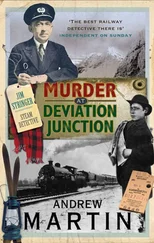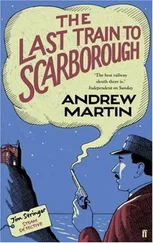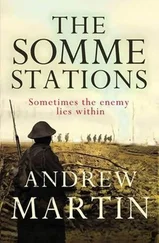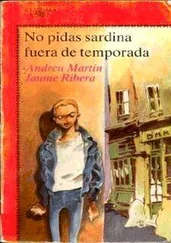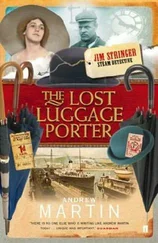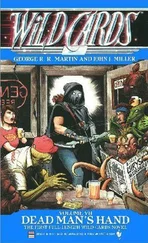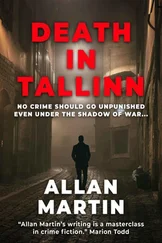Andrew Martin - Death on a Branch line
Здесь есть возможность читать онлайн «Andrew Martin - Death on a Branch line» весь текст электронной книги совершенно бесплатно (целиком полную версию без сокращений). В некоторых случаях можно слушать аудио, скачать через торрент в формате fb2 и присутствует краткое содержание. Жанр: Классический детектив, на английском языке. Описание произведения, (предисловие) а так же отзывы посетителей доступны на портале библиотеки ЛибКат.
- Название:Death on a Branch line
- Автор:
- Жанр:
- Год:неизвестен
- ISBN:нет данных
- Рейтинг книги:5 / 5. Голосов: 1
-
Избранное:Добавить в избранное
- Отзывы:
-
Ваша оценка:
- 100
- 1
- 2
- 3
- 4
- 5
Death on a Branch line: краткое содержание, описание и аннотация
Предлагаем к чтению аннотацию, описание, краткое содержание или предисловие (зависит от того, что написал сам автор книги «Death on a Branch line»). Если вы не нашли необходимую информацию о книге — напишите в комментариях, мы постараемся отыскать её.
Death on a Branch line — читать онлайн бесплатно полную книгу (весь текст) целиком
Ниже представлен текст книги, разбитый по страницам. Система сохранения места последней прочитанной страницы, позволяет с удобством читать онлайн бесплатно книгу «Death on a Branch line», без необходимости каждый раз заново искать на чём Вы остановились. Поставьте закладку, и сможете в любой момент перейти на страницу, на которой закончили чтение.
Интервал:
Закладка:
‘I’ve found you a hotel room,’ he said.
‘Oh aye?’ I said.
‘Well, a word of thanks wouldn’t come amiss,’ he said, ‘seeing as how I’ve just spent half an hour telephoning from the Institute.’
Don Shearsmith, the manager of the York Railway Institute, would vouch that any personal calls you made were in fact made on North Eastern Railway Company business. In theory, these favours were given gratis and with no expectation of return, but with Shearsmith there was always a price to pay at some later date.
‘It’s Jernigan’s Hotel,’ Wright said. ‘Not one of the premier ones, granted. There’s no sea view, but that would be asking the earth at this late stage. It’s above the Marine Drive on the north side. It faces sort of side-on to the sea, so if you leaned out of your window, and kind of craned your…’
I said to Wright: ‘Pitch us over a Bradshaw, will you?’
In the police office, we had the use of all the working timetables, but for ordinary business we used the monthly Bradshaw just like any ordinary tripper. Wright chucked over the one that sat on his own desk, saying, ‘There’s a train for Scarborough at six. We’ve booked, but you and your missus would have to stand.’
I looked up Adenwold, and folded the corner of the page.
I stood up, and walked through to the Chief’s part of the office.
‘Do you want this bloody room or not?’ Wright called after me. ‘You’ve to confirm directly if so.’
‘I’ll think on,’ I said.
A map of the network hung behind the Chief’s desk. I climbed onto his desk chair, so that I was at eye level with Adenwold.
It lay twenty miles north of York on a quiet branch running west to east between the market towns of Pilmoor and Malton. Pilmoor was on the North Eastern main line and Malton was a regular destination from York, and the branch ran between them like a filament in an electric light bulb — something delicate and slight.
From west to east the stations on it, beginning after Pilmoor, were Husthwaite Gate, Moorby, West Adenwold, Adenwold, East Adenwold, Slingsby, Barton-le-Street, Amotherby. These were all villages, and Adenwold, I knew, was smaller than both West Adenwold and East Adenwold, which was rum because their names would lead you to think it was bigger.
They would be there this week-end. Adenwold was small, but it still might have a population running to hundreds, or a hundred at any rate, and the station was like a valve, periodically letting in more.
I looked again at the map.
Another singular point: there were bigger gaps between Adenwold and West and East Adenwold than between any other two stations on the branch. The three Adenwolds sounded like a family, but in fact they were not.
‘What the bloody hell are you playing at?’ asked Wright, who was watching me from the doorway of the Chief’s office.
Pilmoor to Malton was the ‘down’ direction; Malton to Pilmoor was ‘up’. Farm produce and machinery, timber, limestone and gravel (for there were plenty of quarries up there) would be carried by the pick-up goods trains, and there’d not be above one of these each way every week-day. As for the passenger trains… I took up the Bradshaw, sat down in the Chief’s chair and put my boots on the desk as he often did.
‘You’ll catch it if he walks in,’ said Wright, who was evidently unaware of the Chief’s wife’s birthday.
I turned to the page I’d marked in the Bradshaw. A down-line train from Pilmoor would arrive at Adenwold at 8.41 p.m., but there was an earlier ‘up’ train from Malton, marked with a ‘B’ symbol in the timetable. This service only stopped at the principal stations on the branch, and Adenwold was not counted one of these. But the ‘B’ meant that it would set down at any station if advance notice was given to the guard. Why ‘B’ meant that in a Bradshaw I never knew. Anyhow, this service was scheduled to call at East Adenwold at 7.45 p.m., which meant it would pass through Adenwold itself about ten minutes after, or stop there if requested.
On the Saturday, three trains were scheduled to call at Adenwold: an ‘up’ service from Malton arrived at 8.51 a.m., a ‘down’ from Pilmoor arrived at 12.27 p.m. and another ‘up’ arrived at 8.35 p.m. One train arrived in Adenwold on the Sunday — a ‘down’ at 10.05 a.m.
The best bet would be to go to Adenwold, find Lambert’s brother directly and have the whole tale from him.
‘Ever been to Adenwold?’ I called across to Wright.
‘Now hold on a minute,’ he said, ‘your missus is in hopes of the beach and sea air. You can’t take her to bloody Adenwold!’
‘The inn there,’ I said, stepping back into the main office, ‘what’s it called, do you know?’
Wright shrugged, having fallen into a sulk. He was so dead set on getting me fixed up with a hotel in Scarborough — preferably one slightly more inconveniently placed than his own — that he wouldn’t be party to any plan that took me in a different direction.
‘Your missus!’ he called, as I stepped out into the hot gloom of the station light. ‘She’ll be in fits!’
Chapter Seven
I walked through the ticket barrier, past the booking office and cab stand, and turned right under the glare of the sun. Two minutes later, I was breathing the dusty air of the Railway Institute reading room. The clock said twenty to six, and it ticked away the life of the super-annuated railwayman sleeping in the one armchair. The rest of the room was mostly hard wood: tall stools, and tall, sloping desks. At these, you read the paper of your choice from the selection ranged on the long table by the window.
The back numbers were stowed underneath. I hauled out a bundle of Yorkshire Posts, and leafed backwards through them until I found the account, in the paper dated Thursday, 27 April, 1911.
There was a woodcut of Hugh Lambert in the dock, and the name of the writer came to me in a flash. Stevenson. Hugh Lambert looked like Robert Louis Stevenson. The article was headed ‘The Moorby Murder — The Killing of Sir George Lambert’, then ‘The trial in summary by Our London Correspondent’. It began: ‘For the past week, the crowded court has listened closely to the sad and painful story of how a son perpetually at odds with his father finally resorted to murder.’
The killing had occurred in the early evening of Wednesday, 8 November, 1909. Hugh Lambert had made off immediately afterwards, and had eventually been arrested in London after living for more than a year abroad. It had happened during a ‘rough rabbit shoot’ in the woods close to the Hall at Adenwold, family seat of the Lamberts. Present at the shoot were Sir George Lambert, his friend the Reverend Martin Ridley, parish priest of Adenwold, and Hugh Lambert. Two villagers had also been employed to ‘walk-up’ the rabbits, but these were not named.
Hugh Lambert did not go in for country sports, and he described the shoot as ‘a debauch’, in which he had been forced to participate by his father. He had admitted that he had earlier quarrelled with his father, and that they were both drunk on the ginger liquor that his father habitually consumed before walking nightly through the coverts with his guns, of which he kept a good many. The three men on the shoot had become separated in the woods. Hugh Lambert’s account was that he had fallen down in a drunken swoon. When he returned to consciousness, an extra shotgun was beside him. He picked it up, and found that he was standing over his father’s body. A policeman called Anderson (‘Constable of the Three Adenwolds’) was just then walking through the woods with his spaniel. He had hailed Hugh, who had then run off, making his way to Paris and later Italy. The gun was later found to be one of Sir George Lambert’s, and to be covered with the finger marks of Hugh.
Читать дальшеИнтервал:
Закладка:
Похожие книги на «Death on a Branch line»
Представляем Вашему вниманию похожие книги на «Death on a Branch line» списком для выбора. Мы отобрали схожую по названию и смыслу литературу в надежде предоставить читателям больше вариантов отыскать новые, интересные, ещё непрочитанные произведения.
Обсуждение, отзывы о книге «Death on a Branch line» и просто собственные мнения читателей. Оставьте ваши комментарии, напишите, что Вы думаете о произведении, его смысле или главных героях. Укажите что конкретно понравилось, а что нет, и почему Вы так считаете.

